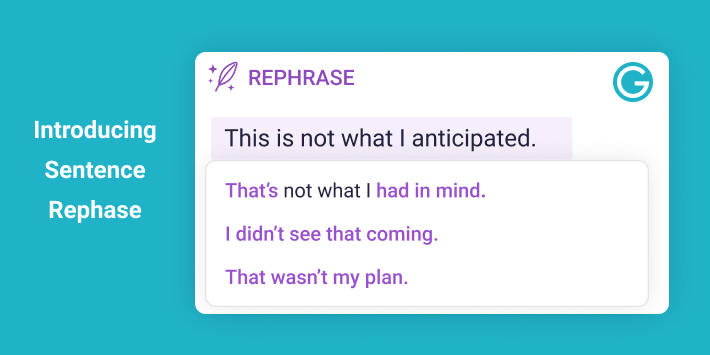
In grammar, a particle is a range of words that fall outside the traditional eight parts of speech – noun, verb, pronoun, adjective, preposition, adverb, interjection, conjunction, yet there is no doubt about its value in language.
So, what is a particle in English? The best way to look at it is as a function word, or word that must be associated with another to give meaning. An example would be the ‘
to’ in the verb ‘
to run’. Although
to can be used as a preposition, with verbs like
to run, to love, or
to talk, it acts as something called an infinitive marker, and it doesn’t really have any meaning on its own. The broad term for words like this is
particle.
What is a Particle in a Sentence?
In most cases, particles are prepositions used in conjunction with another word to form phrasal (multi-word) verbs. Words like
in, off, up, by, along, down, forward, under (all prepositions) can be particles, as can the previously discussed word,
to, when used as the infinitive marker.
An example of a particle in a sentence:
- He ate up all his dinner.
In this sentence
up is a particle. Why? Because the word up is not functioning as a traditional part of speech. Yes, up can be used as a preposition, adverb or adjective, but in this case, it is not quite doing that.
Up in this example is acting as an adverb particle as part of a phrasal verb. We will discuss the role of adverb particles in a later section.
Particle Examples
Let’s look at some examples of particles in sentences, beginning first with the adverb particles that form phrasal verbs:
- Sassy went away on a long trip.
- We will talk over the problem.
- Jimmy started out with sixty dollars.
Next some examples of to as a particle when used as the infinitive marker (notice how
to is used as a particle and preposition in the first example):
- I wanted to go to the movies.
- Helen hopes to decide on her future soon.
- We are not going to go along with this any longer.
Next some examples of discourse particles:
- Now, who would like some dinner?
- I was told I would be fired. Well, I will not accept that without a fight!
Please note that discourse particles are more likely to be part of speech than writing. In addition, it could be argued that discourse particles fall under the banner of interjections (words like
oh,
wow,
hey).
Finally, the word
not, which is termed a negative particle
- We will not travel to Paris this summer.
- The president does not have that authority.
Adverb Particle
The most common particles you will come across are those words that are mainly used as prepositions, but which become adverb particles when combined with a verb. For example:
- The project was moving along at a steady rate.
Along is the adverb particle in this sentence, joining with
move to form the phrasal verb
move along. It is almost unnecessary to use
along in the example, and we could still fully understand the meaning of the sentence without it. So, why use particles in English at all? Grammarians don’t often agree on the reasons for these things, but it’s enough to say that these phrasal verbs that use adverb particles have become more common over time. It might seem unnecessary to have them, but language would be a lot less fun if we didn’t.
Moreover, we can also argue that adverbial particles do, in fact, give some meaning to the sentences. Looking back at a previous example:
- He ate up all his dinner.
Without the adverb particle the sentence would look like this:
Are both those sentences truly the same? One might argue that
ate up is a little stronger and more visual than
ate. The difference is subtle – very subtle. However, it underlines a point on which grammar specialists do agree; namely, that particles are “discrete entities”, i.e. they perform very subtle roles in a sentence, but their usage adds flavour and meaning.
We should, however, be clear that some adverb particles do give very important context as part of a phrasal verb, without which the phrase would make no sense. For example:
- The airplane took off at 3am precisely.
Took off is a phrasal verb meaning to become airborne. Without the adverb particle
off, the sentence,
the airplane took at 3am precisely, would be nonsensical.
How Many Particles Are in English?
Because many prepositions can be used as adverb particles, we can say that there are dozens of English particles. However, we can break them down into these categories:
- Grammatical particles – the infinitive marker to.
- Adverb particles – prepositions that combine with verbs to form phrasal verbs.
- Discourse particles – words like now and well that are used like interjections.
- Negative particle – the word not.
And a final note: The words
yes and
no are sometimes described as grammatical particles as they do not fit into the eight parts of speech. The debate rages over this, as some grammarians argue that they are interjections. However, this issue feeds into a (friendly) criticism often aimed at grammarians; namely, that all the words they can’t easily categorize, they lump together and call them particles.
 In grammar, a particle is a range of words that fall outside the traditional eight parts of speech – noun, verb, pronoun, adjective, preposition, adverb, interjection, conjunction, yet there is no doubt about its value in language.
So, what is a particle in English? The best way to look at it is as a function word, or word that must be associated with another to give meaning. An example would be the ‘to’ in the verb ‘to run’. Although to can be used as a preposition, with verbs like to run, to love, or to talk, it acts as something called an infinitive marker, and it doesn’t really have any meaning on its own. The broad term for words like this is particle.
In grammar, a particle is a range of words that fall outside the traditional eight parts of speech – noun, verb, pronoun, adjective, preposition, adverb, interjection, conjunction, yet there is no doubt about its value in language.
So, what is a particle in English? The best way to look at it is as a function word, or word that must be associated with another to give meaning. An example would be the ‘to’ in the verb ‘to run’. Although to can be used as a preposition, with verbs like to run, to love, or to talk, it acts as something called an infinitive marker, and it doesn’t really have any meaning on its own. The broad term for words like this is particle.

